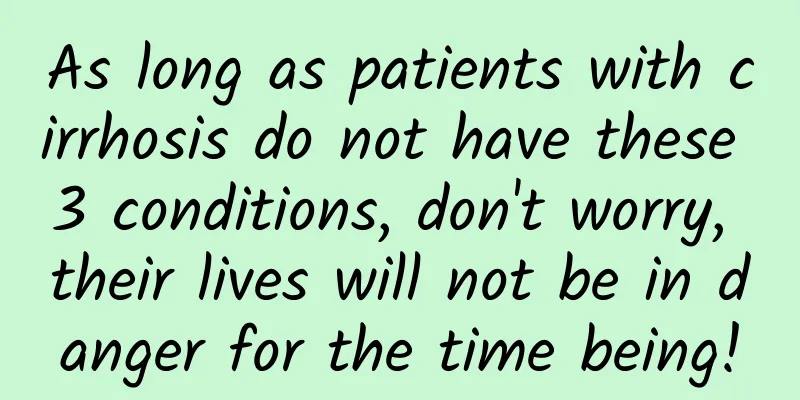My period hasn't come yet and I have a dull pain in my lower abdomen

|
Many female friends may experience that their periods do not come for a long time, and they may feel a dull pain in their lower abdomen. This will be very distressing, and they must pay attention to psychological treatment. First of all, they should eliminate their mental tension and not let themselves be in an anxious mood all the time. They should relax more so that their condition can improve faster. Dysmenorrhea is a common symptom among women. Dysmenorrhea before marriage will naturally disappear when you are older, especially after marriage and childbirth, and there is no need for treatment. Except in individual cases. However, if the pain of dysmenorrhea lasts for more than 3 days and affects one's life, treatment should be given. The treatment of primary dysmenorrhea is mainly symptomatic treatment, with analgesia and sedation as the main focus. 1. General treatment (1) Pay attention to psychological treatment and eliminate tension and worries. (2) Get enough rest and sleep, exercise regularly and moderately, and quit smoking. (3) When the pain is unbearable, supplement with medication. 2. Medication (1) For dysmenorrhea caused by adenomyosis in women who do not desire pregnancy, Mirena is the first choice. (2) Oral contraceptives: Suitable for women with dysmenorrhea who require contraception, with an effectiveness rate of over 90%. (3) Over-the-counter drugs: acetaminophen, acetaminophen plus pamabrom, and vinyl salicylic acid (aspirin). 1. The occurrence of primary dysmenorrhea is mainly related to the increase in endometrial prostaglandin content during menstruation. Elevated PGF2α levels are the main cause of dysmenorrhea. High levels of PGF2α can cause excessive contraction of uterine smooth muscle and vascular spasm, resulting in uterine ischemia and hypoxia and dysmenorrhea. 2. Increase in substances such as vasopressin, endogenous oxytocin and β-endorphin. 3. Mental and neurological factors. Secondary pain is often caused by endometriosis, adenomyosis, etc. 1. Primary dysmenorrhea is more common in adolescence, often occurring within 1 to 2 years after menarche. The main symptom is lower abdominal pain that occurs regularly during the menstrual cycle. The symptoms of secondary dysmenorrhea are the same as those of primary dysmenorrhea. Secondary pain caused by endometriosis often progressively worsens. 2. The pain usually starts after menstruation, and the earliest appearance is 12 hours before menstruation. The pain is most severe on the first day of menstruation and lasts for 2 to 3 days before being relieved. The pain is often spasmodic. It is usually not accompanied by abdominal muscle tension or rebound pain. 3. It may be accompanied by symptoms such as nausea, vomiting, diarrhea, dizziness, fatigue, etc. In severe cases, the face will turn pale and cold sweats will occur. |
<<: Menstruation has not come for more than 15 days
>>: Brown discharge without period
Recommend
Do you know what you can’t eat during your period?
Women need an excuse when they have their period,...
5 ways to help you give birth to twins
Having twins should be every woman's dream. O...
What calcium supplements should pregnant women take?
It is very important for pregnant women to supple...
The importance of sleep to physical and mental health, and the impact of poor sleep on health
Sleep is an integral part of human life and has a...
23 years of fighting against advanced ovarian cancer
In daily life, we often see many examples of ovar...
What is the nutritional value of hamburgers? How to make hamburgers
Hamburgers are convenient, delicious, and nutriti...
Egg yolks and red meat increase risk, not through cholesterol! New perspective on cardiovascular disease prevention and treatment
There has always been controversy over whether eg...
I had sex 1 day after my miscarriage
You need to be observed in the hospital on the fi...
Is vomiting yellow water a way to terminate pregnancy?
The period of pregnancy is the most important in ...
How long can you live with breast cancer?
The problem of breast cancer is relatively common...
What is gynecological herpes?
Gynecological herpes is a common disease, but peo...
Why is the gestational sac growing slowly?
As the number of days of pregnancy increases, the...
Nine-price sex life
HPV vaccine is actually meant to prevent patients...
Is it easier to get pregnant with a second child? Why does a second child get pregnant earlier?
We all know that after a woman becomes pregnant, ...
What causes tinnitus in women?
Women in today's society are generally under ...









